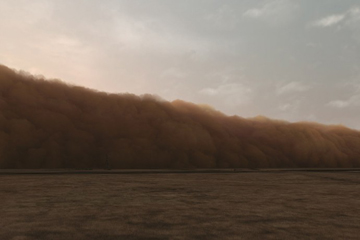This weekend I travelled to Washington D.C. (Arlington VA to be exact) to participate in a panel called WE HAVE DECIDED NOT TO DIE for the Arlington Arts Center‘s amazing TRANSHUMAN CONDITIONS show, curated by Jeffry Cudlin.
While preparing for this panel discussion (and because I tend to over-prepare), I re-read an essay by my current academic crush, Ollivier Dyens, currently a Vice-Provost at Concordia University. In his essay from 1994, The Emotion of Cyberspace: Art and Cyber-ecology he writes:
“The role of the artist, moreover, is destined to change. New emotions structured by the symbiosis of human and computer memes are about to appear: emotions flooded by the cheerfulness of technology, drunk with the recognition of cyber-ecology, but also imprinted with the profound sorrow of the human artist’s expression.”
As someone who is concerned with making things, I find Dyens’s writing inspiring, or maybe I mean poetic. In any case, with these ideas in my head, I came across John Gerrard’s work while touring the Hirshhorn Museum and Sculpture Garden.
Gerrard describes the process of creating his “Realtime 3D projection” entitled Dust Storm (Dalhart, Texas) of 2007:
Production of the work involved the virtual reconstruction — based on hundreds of the artist’s own photographs and video — of a ten mile square section of Texan landscape close to the town of Dalhart, an area scattered with windmills, farms and fences. This documentation was subsequently enhanced by publicly accessible satellite and topographical data.
Once activated, a virtual storm unfolds in a sculptural and constantly random manner within the reconstructed landscape.
Dust Storm (Dalhart, Texas) is a visual, spatial and temporal representation of a place, as the animation is programmed to work on a “realtime” cycle. When it is night in Dalhart, TX, it is night in Dust Storm (Dalhart, Texas). The stars in Dust Storm (Dalhart, Texas) coincide with the stars in Dalhart, TX.
Like Dyens predicts, Gerrard’s work is “flooded by the cheerfulness of technology, drunk with the recognition of cyber-ecology, but also imprinted with the profound sorrow of the human artist’s expression.” It is neither here nor there, existing either as light coming out of a projector, or as an integrated circuit processing a giant batch of code. What we experience as the work is something completely immaterial, ephemeral. It’s thrilling to see this barren environment, the giant dust cloud appearing to approach but never reaching us, the wild traveling shots of “the camera,” pointing to some sort of nonhuman consciousness, moving us in circles through this landscape. The phantasmagoric realness of the scene being created in front of us is completely mesmerizing and haunting.
While on a purely aesthetic level it has a relationship the work of James Benning and J.M.W. Turner to mention but two, Gerrard’s work feels like it is approaching a “nodal point” (to use William Gibson’s terminology) in artmaking, in the way that (and I REALLY hate to make this comparison) James Cameron’s Avatar approaches this same point in narrative filmmaking.





Pingback: Kino-Eye, the video cyborg | Art21 Blog